Looking for a special shrub or small tree for your garden? Hydrangea can be an inspired choice. With its striking colors and easy-growing nature, the hydrangea plant can add flair to your garden without the expense of other plants.
Find out more about the meaning of this flower, explore different types and varieties, and learn how to grow and care for them. We’ll also show you how to change the plant’s color. Yep, you can do that!
Getting the hydrangea pronunciation right shouldn’t be too hard, especially since it’s the same in both British and American English—/haɪˈdreɪndʒə/. Try that a few times. Not that hard, right?
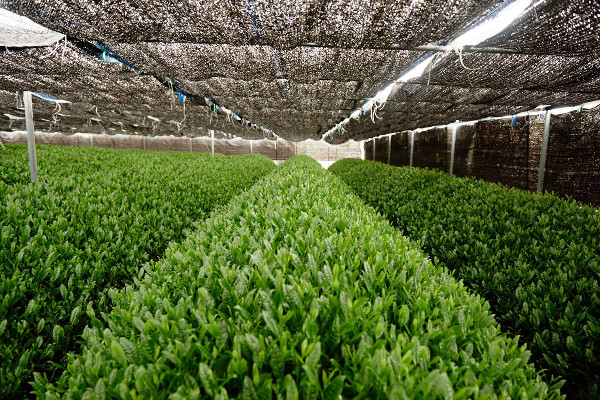
Most hydrangeas are white, but today you have more color varieties to choose from than ever, including pale green, red, and a spectacular bright blue. This plant can be deciduous or evergreen and blooms from early spring to late fall. The best part, they are one of the best shade plants you can get!
Hydrangea Meaning
Hydrangea has a strong significance in Japan, where it symbolizes apology, gratitude, and deep emotion.
According to legend, a Japanese emperor had been neglecting the maiden he loved. To make up for it, he gave hydrangeas to the girl’s family. Through his gift, he wanted to express his regret and show his appreciation for her.
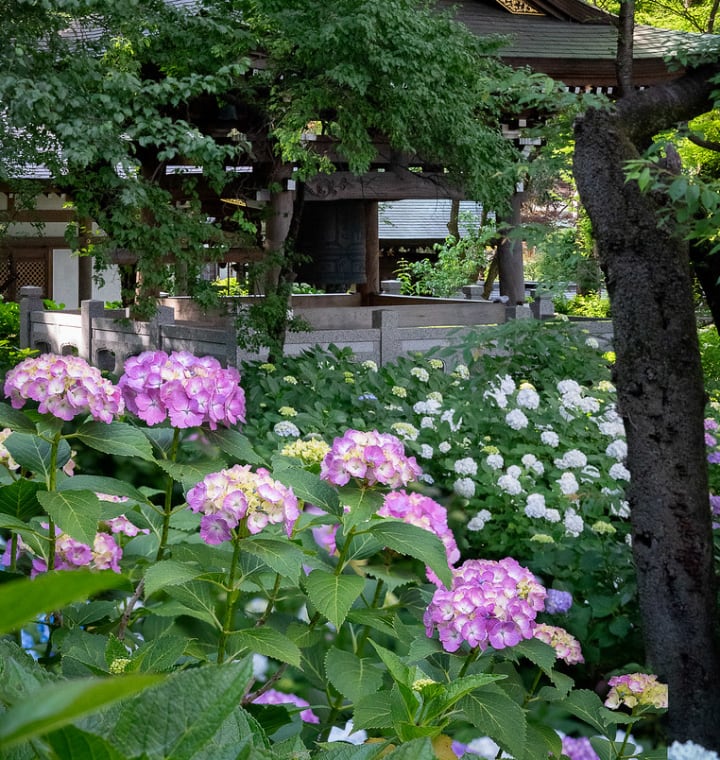
By contrast, the Victorians associated this flower with boastfulness and vanity. This was because hydrangeas produced relatively few seeds compared to flowers.
The name “hydrangea” has in fact Greek origins. In Greek, it means “water vessel,” a reference not so much to the flowers of the plant but to its seed capsules.
In the 18th and 19th centuries, hydrangea used to be called hortensia.
Hydrangea Colors Meaning
Different hydrangea colors carry their own special meanings. Knowing about these can help you choose the right variety to give as a gift.
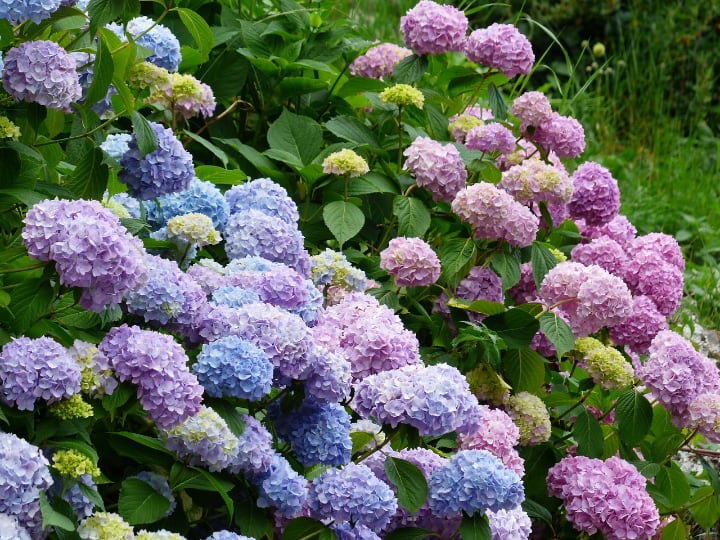
- White hydrangea symbolizes grace and abundance, but of all varieties, it’s also the one most often associated with bragging. For most occasions, this is not a demure choice!
- Pink hydrangea is said to resemble a beating heart. It symbolizes romance and love and is a great flower for weddings.
- Purple hydrangea symbolizes wealth and abundance and a desire for understanding someone more deeply.
- Blue hydrangea can express regret or asking for forgiveness. But it’s also associated with declining a romantic proposal.
Is Hydrangea Poisonous?
The flowers and leaves of the plant can poison humans, cats, and dogs but only if ingested in large quantities. The most obvious symptom is stomach problems.
If you have small children or flower-eating pets, you may want to consider fencing off your flower just in case.
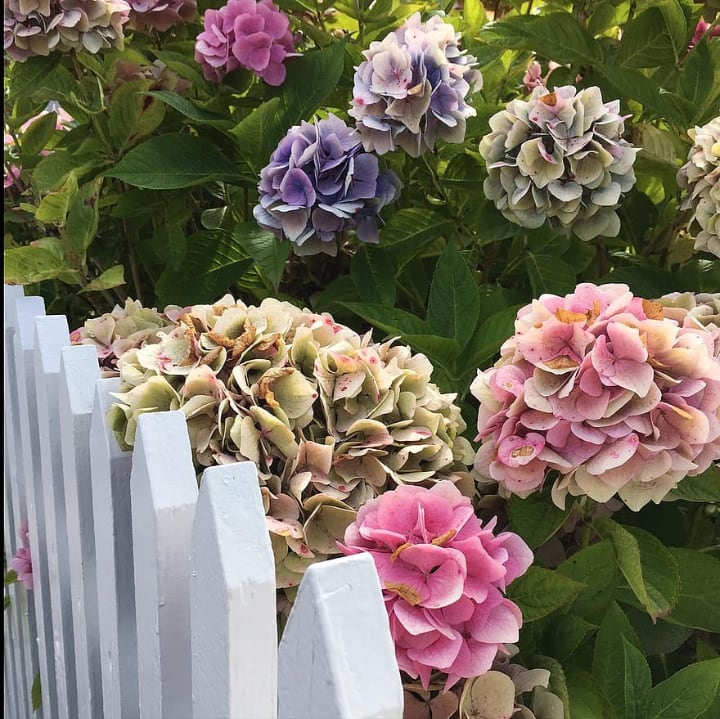
But remember that while the plant is toxic, it’s nowhere near as dangerous as other toxic plants.
Best Hydrangea Types
Hydrangeas can bloom on new growth or old growth. If you live in a cool climate, varieties that bloom on new growth can flower reliably without requiring much care.
If you live in a warm climate, you can also grow types that bloom on last year’s stems.
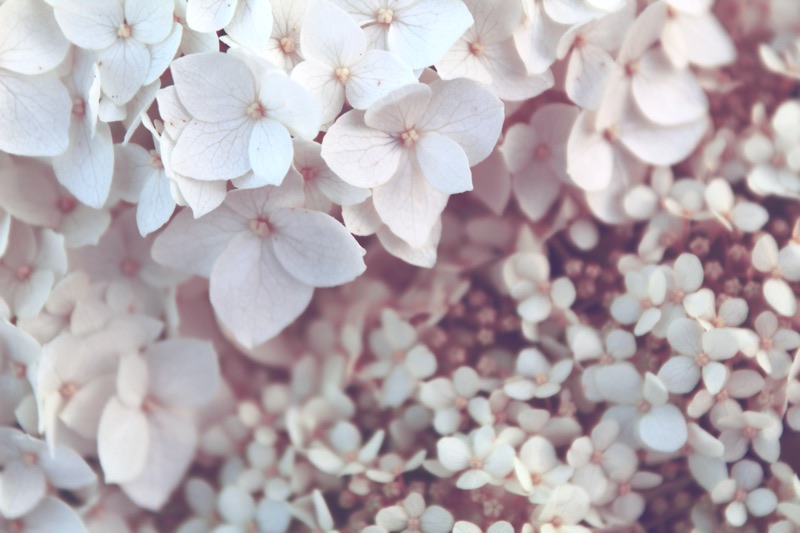
Everblooming types are recent cultivars that flower throughout the season. They flower on both last season’s and the current season’s stems.
Long-blooming hydrangeas flower over a long season. They don’t bloom continuously, but when they do, they put on a wonderful show that makes the wait worthwhile.
Discover now some of the most beautiful types, including both ever-bloomers and long-bloomers.
1. Hydrangea Macrophylla Nikko Blue
Grow this hydrangea bush in acidic soil and it will produce delightful blue blooms in early summer. You can enjoy the blooms for around two months.
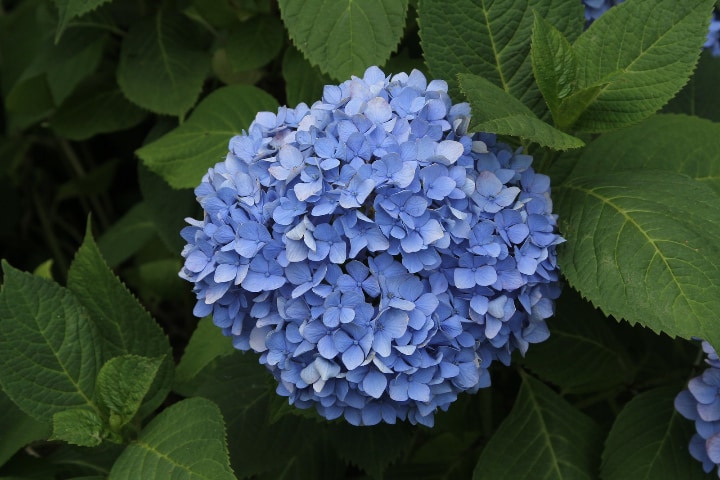
Like most macrophylla or bigleaf cultivars, this one requires winter protection.
Tip: Avoid overexposing it to the sun—it tends to grow best in part shade.
2. Hydrangea Arborescens Abetwo
Commonly known as Incrediball hydrangea, this white shrub has huge, tightly packed flowers.
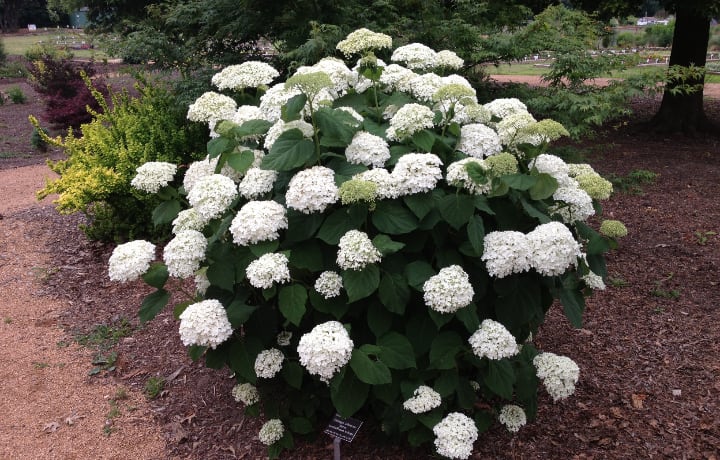
It can grow up to 9 ft in height and prefers temperate and warm climates. White varieties don’t get more spectacular than this one.
3. Hydrangea Paniculata Limelight
The green-tinted flowers of this graceful plant mature to a mellow pink. You’re looking at a fast grower that can surpass 8 ft in height.
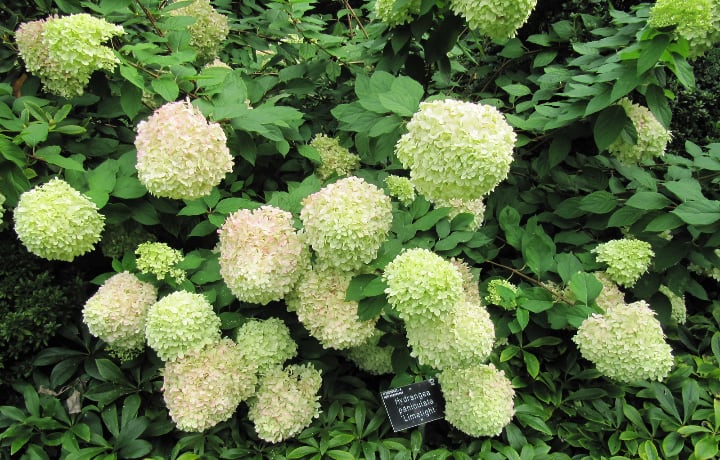
The best part about this flower is that it blooms on new growth, making it a hardy choice in winter.
4. Hydrangea Macrophylla CitylineMars
Not your average cultivar, this ones has deep purple flowers with white fringes. Seen from a distance, the dense petals look like clumps of fluttering butterflies.
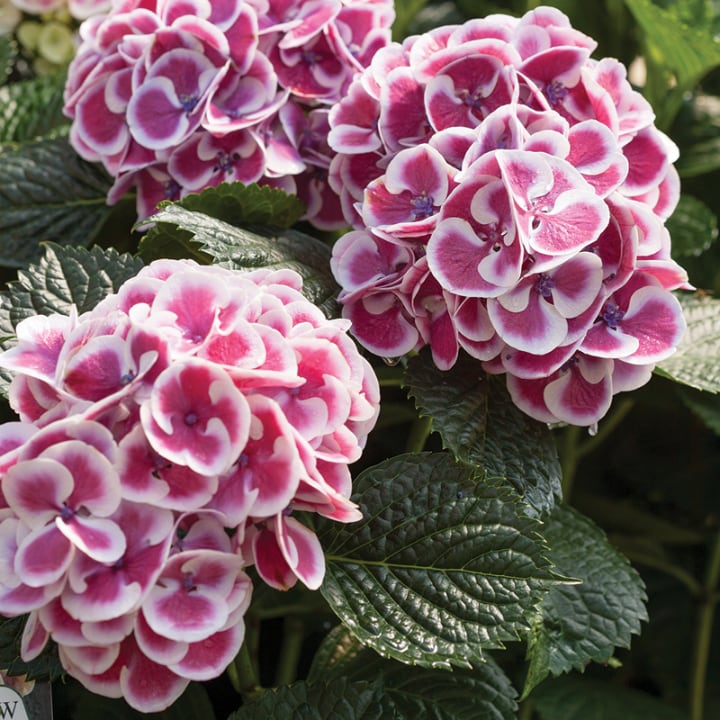
Did you know: Like other hydrangea macrophylla types, this variety will change its color based on the acidity of the soil. A neutral pH promotes a more balanced purple shade.
5. Climbing Hydrangea
Another interesting white variety is the anomala petiolaris or climbing hydrangea. Left to grow on its own, it behaves not so much as a bush but as a climber which can cover 50 ft worth of walls or fences.
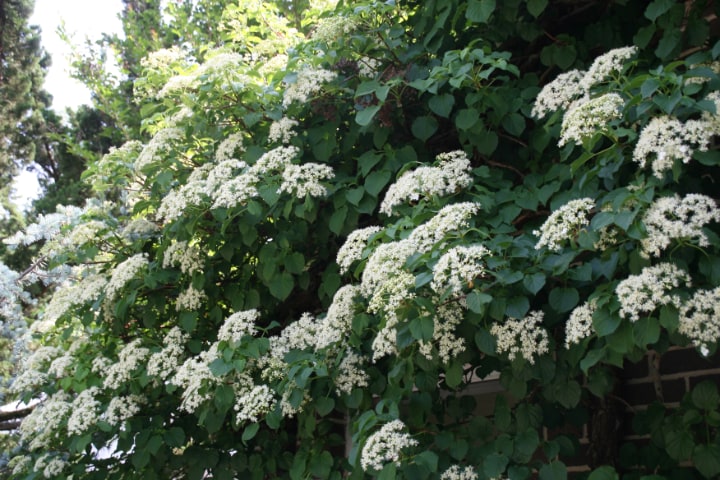
But bear in mind that this climbing plant takes a long time to grow and spread. It does best in mild to moderate climes.
6. Hydrangea Macrophylla Endless Summer Bloomstruck
An everblooming variety, this one survives harsh winters to put up deep purple and rose blossoms.
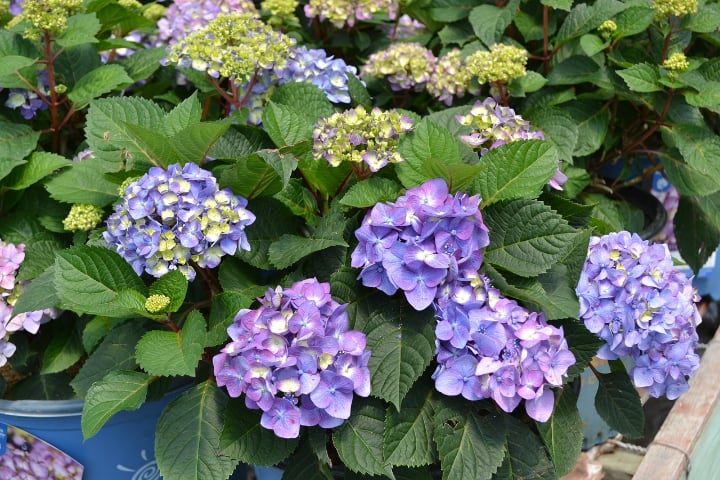
This medium-height plant remains a colorful spectacle throughout the summer.
While it’s not very demanding in terms of care, you do want to place it in a spot where it’s protected from the harsh afternoon sun.
7. Hydrangea Serrata Blue Deckle
The late-blooming Blue Deckle is a small variety that loves dappled sunlight. And it’s not just its exquisite blue petals you can gape at.
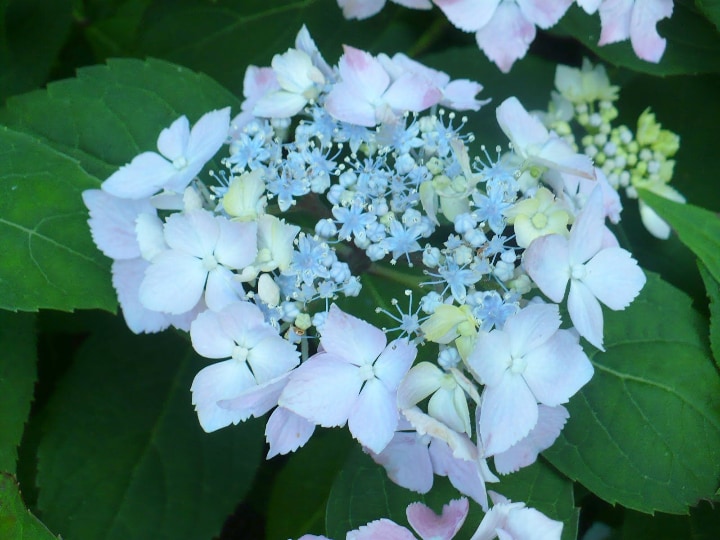
In the fall, its leaves turn red and purple and put on a wonderful show of their own. All in all, this flower can be a stunning choice for a creative garden.
8. Hydrangea Macrophylla Eldorado
With its exotic-looking red petals, this small shrub stands out from other macrophylla varieties. It’s a late bloomer native to Japan that grows best in acidic or neutral soil.
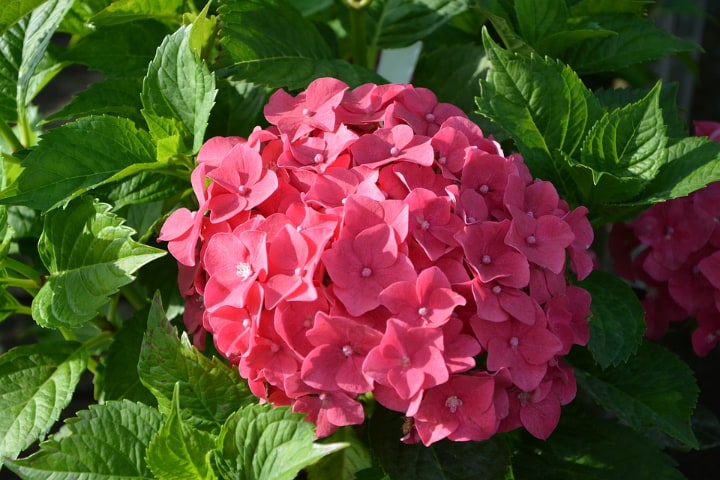
Tip: To ensure it grows nicely, put it in a place where it gets full sun to part shade.
9. Hydrangea Quercifolia Oakleaf
A long-blooming variety, this one impresses with its large flowers and ornate peeling bark. As the blooms mature, they attain a deep red color in the fall.
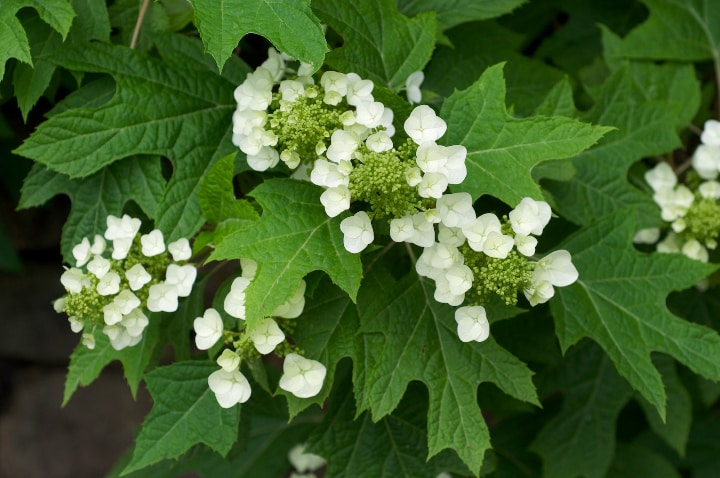
While these plants don’t require much maintenance, you want to prune them after flowering. That way you can keep them healthy and enjoy more beautiful blooms.
Good to know: This variety grows best in partial shade.
10. White Hydrangea Annabelle
A large shrub, the Annabelle is very resilient. You can grow it as a perennial provided that you prune it in the fall.
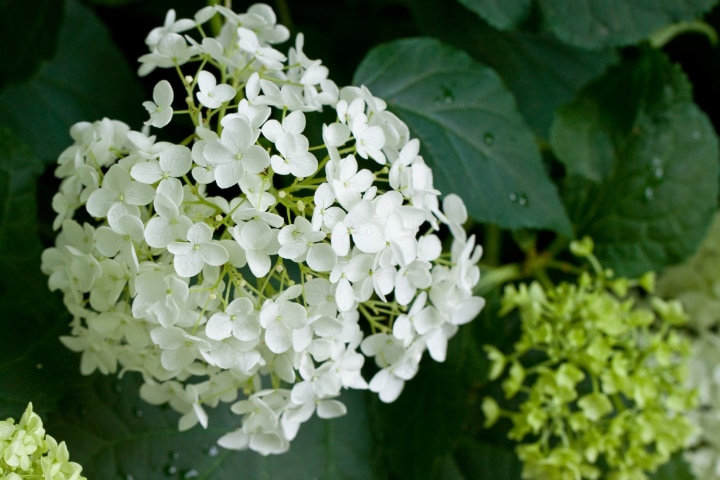
You’ll love its very large, smooth flowers that spring from new growth in symmetrical clusters.
Tip: It grows as much in width as it does in height, making it great for covering spare areas in your garden.
11. Grandiflora Panicle Hydrangea
You can grow this large-flowered, floppy plant either as a shrub or as a small tree, depending on how you prune it.
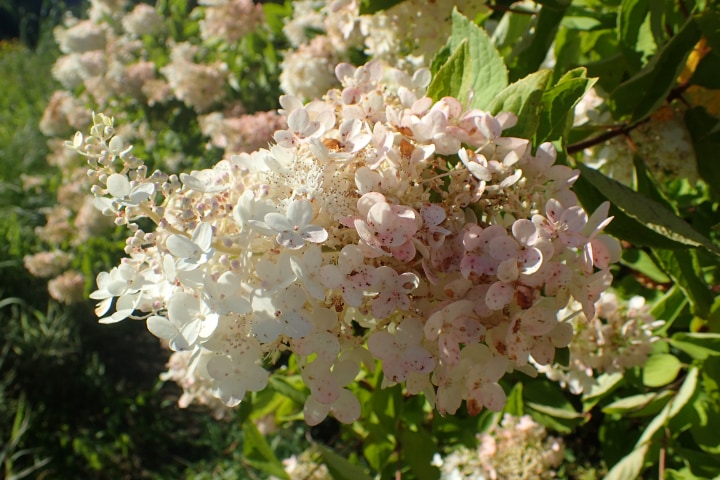
It flowers later in the season, but the magnificent show it puts on makes the wait worthwhile.
Tip: To keep it healthy and blooming you want to remove dead branches after flowering.
12. Hydrangea Macrophylla Harlequin
This spectacular mophead hydrangea boasts striking bicolor blooms. Its rich clusters of flowers and exquisite, butterfly-like petals make for a vibrant and joyful presence in any garden
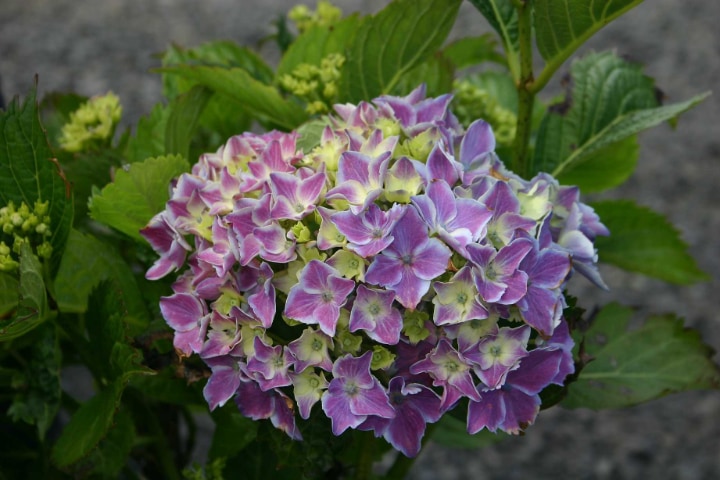
It’s a great plant to brighten up a sad area when you’re redesigning your garden.
Tip: Ensure optimal growth by sheltering it from the hot afternoon sun.
13. Hydrangea Paniculata Strawberry Vanilla
This popular variety looks as sweet as its name. Its creamy white blooms mature to a beautiful strawberry pink color during late summer to early fall.
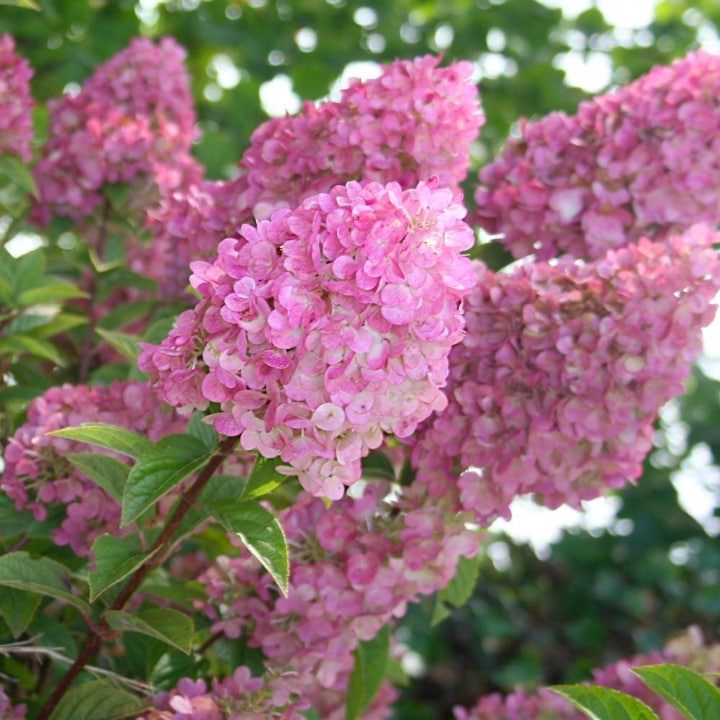
It’s a relatively recent cultivar that likes full sun and can reach 7 ft in height. You can plant it in late fall or early spring.
How to Grow Hydrangeas
Thes lovely plants aren’t difficult to grow provided that you choose a variety that’s suitable for your climate.
As noted, some varities are not cold hardy, while others like more sun than others. Let’s take a closer look at how you can grow hydrangeas indoors and outdoors.
Planting Hydrangeas in the Garden
The best way to grow them outside is from cuttings that have at least 3 or 4 pairs of leaves on them.
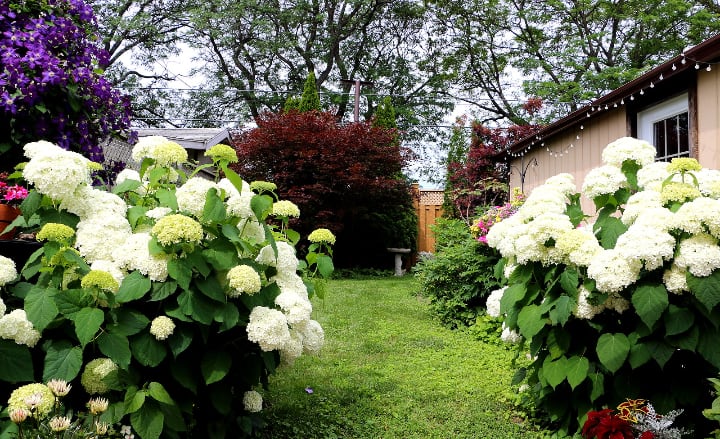
- Plant the cuttings in spring or fall in rich soil.
- Add compost to the soil before planting to help the plants thrive.
- Make sure that the spot you choose gives the plant enough sun or else protects it from the harsh noonday sun, depending on the cultivar.
- The hole you plant your flower in should be as deep as the root ball and twice as wide. Don’t worry about making the hole wider—better to err on the side of caution.
- When you’re halfway filling the hole with soil, water it abundantly and then let the water drain before filling it up.
- If you’re planting several hydrangeas, place them at least 3’ apart to give them enough space to grow.
- You may also want to dust the leafless part of the stem with an anti-fungal powder.
How to Grow Hydrangea from Seeds
It’s easier and usually better for the plant to grow hydrangea from cuttings rather than seeds.
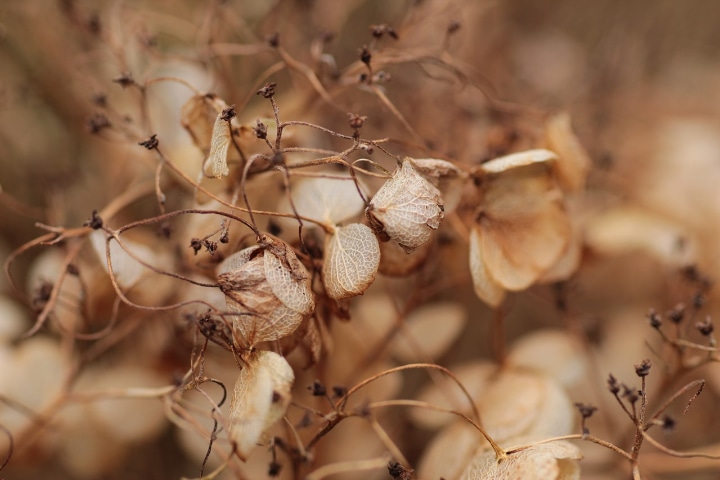
But if you get your hands on some hydrangea seeds or want to gather seeds in the fall from a plant already established in your garden, go for it.
- You can sow the seeds in the fall after collecting them.
- You can also germinate them in a plastic bag stored in a cool place and sow in spring. Choose whichever method comes easier for you.
- When collecting seeds, wait for the flowers to start to fade and dry and then clip the flower heads. Store them in paper bags for around a week to dry them out completely.
- The seeds are quite small, so it’s often better to take the heads out of the bag and shake each one carefully over a clean surface to gather them.
- Sow the seeds on the surface of potting soil—be careful not to bury them into the soil.
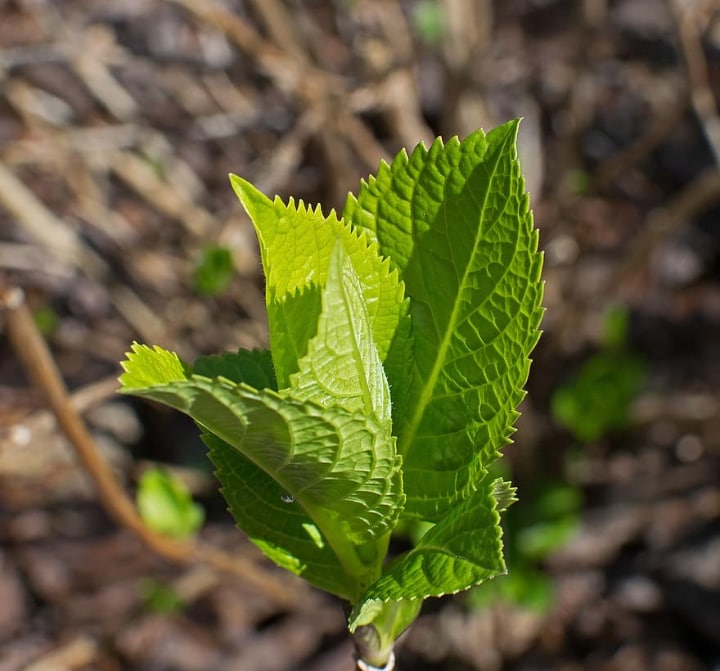
- Place the seed tray in a sunny spot and keep the soil moist. After around 14 days, the plants should sprout. You can then plan them in the garden or a larger pot.
Growing Hydrangeas in Pots
Most flowers in pots bought as gifts last only for a few weeks. But don’t let that discourage you.
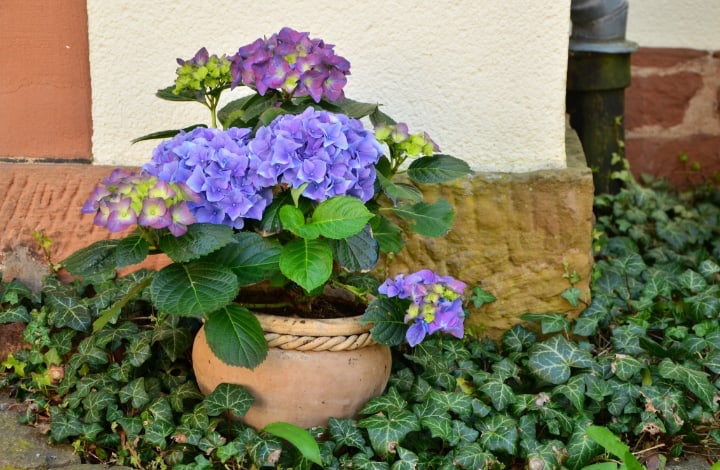
You can grow hydrangeas in a container provided you pay attention to a few things. Before you start, it’s good to know that dwarf varieties grow better in pots than larger varieties which need a lot more space.
- Transplant your potted flower to a larger container which is at least 3-4” wider than the pot it came in.
- Keep it on a south-facing window to ensure it gets enough sunlight.
- Leave 3” of free space between the potting mix and the rim of the pot and water your container to the brim with water and let it drain.
- If you move the pot outside during the spring and summer, don’t forget to move it back inside during winter.
- Store it in a cool garage to ease the plant into dormancy and keep watering it moderately.
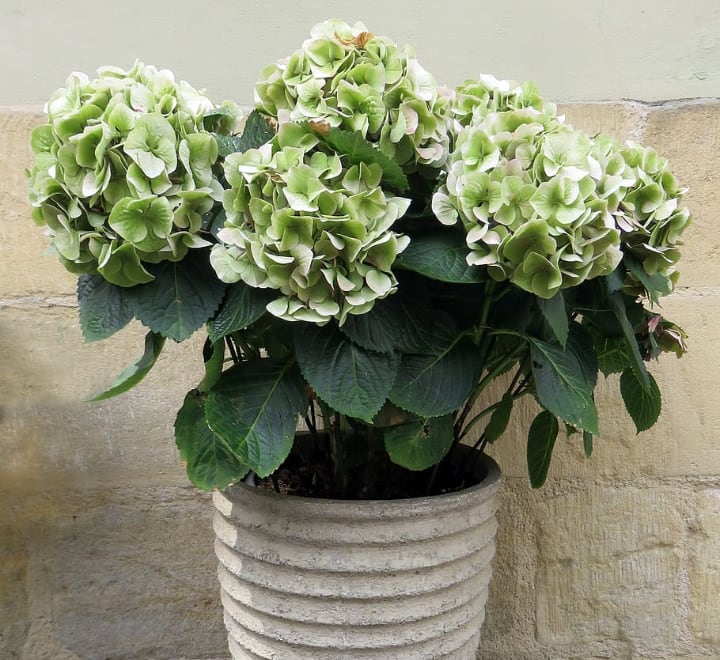
Can You Change the Color of Hydrangea Flowers?
White hydrangeas tend to stay white regardless of the acidity or alkalinity of the soil. But some macrophylla and serrata varieties change color based on the pH level of the soil.
Did you know: Acidic soils (<5.5 pH) will make the flowers blue while alkaline soils will make the flowers pink.
But it’s not just the plant type and the pH level of the soil that determine the color of the flower.
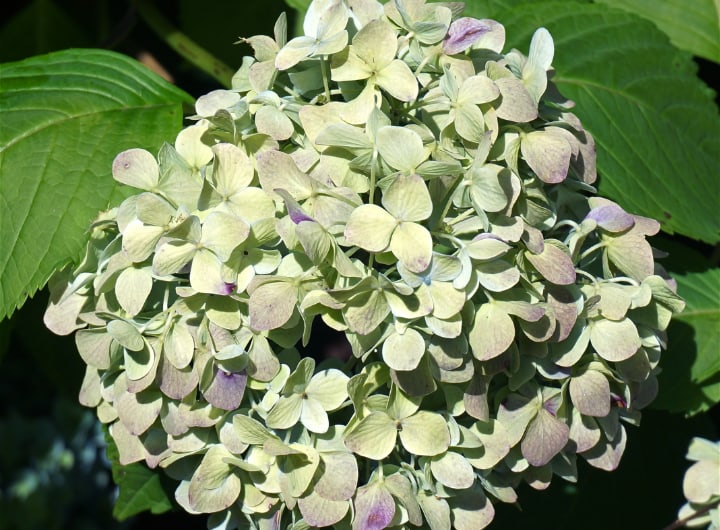
Tip: The concentration of aluminum ions in the soil also matters. Changing or correcting the color of a hydrangea flower takes weeks. It’s best to do it with mature plants that are at least 2 years old.
To make your hydrangea blue, apply to the plant a solution of ¼ ounce aluminum sulfate per gallon of water.
Apply it first once the plant starts growing in spring and then every 3 weeks during its growth period.
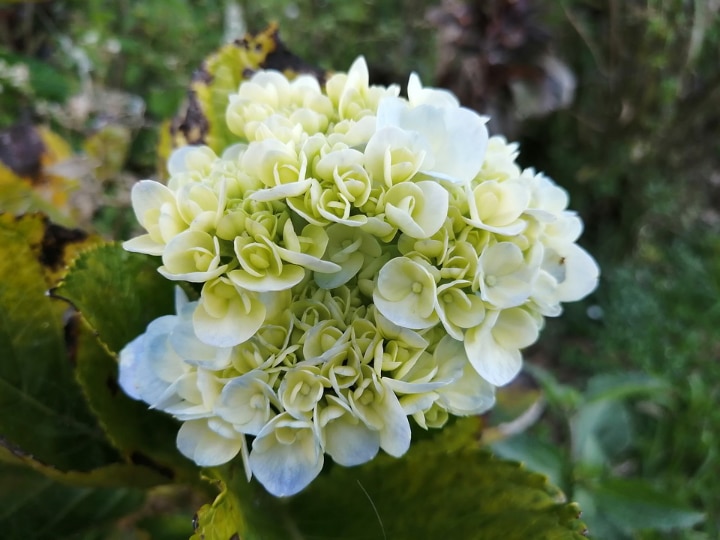
Also, fertilize the flower in the spring with a 25-5-30 fertilizer.
To make it yellow, add ground limestone to the base of the plant (4 pounds per 100ft2) and water well.
Hydrangea Care
If you know what to expect from the variety you choose, you don’t have much to worry about in terms of caring for these plants.
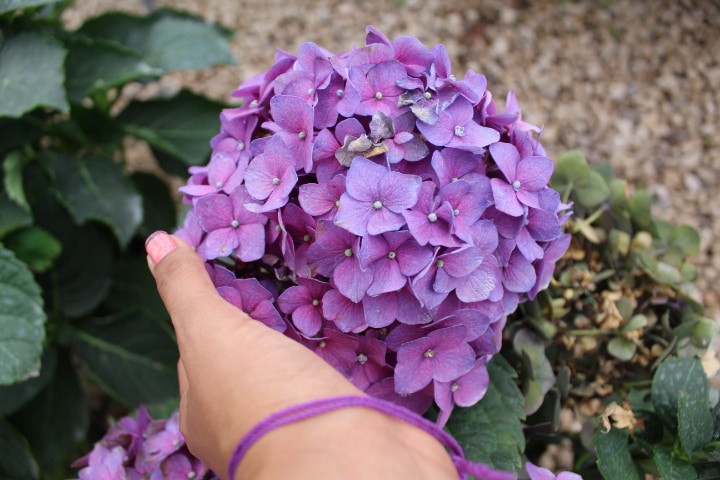
You don’t have to worry all that much about fertilizing them, either. However, these flowers are vulnerable to fungal leaf diseases.
Here are the essential hydrangea indoor and outdoor care tips you need to know, including how to protect your plants from disease.
Bear in mind that this advice is general and different hydrangea types may have their own requirements.
Soil
Some plants are very choosy about their soil—but not hydrangeas. They thrive in slightly acidic rich organic soil with good drainage conditions.
But you can grow them in most types of soil ranging from woodland soil to sandy coastal soil.
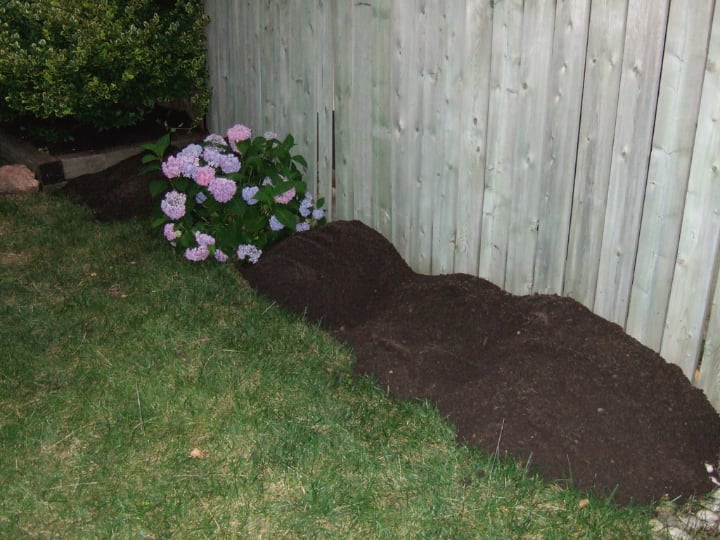
A thing to note is that while they like soil that keeps moisture, they are prone to rot. More about watering in a bit.
Light
You don’t want to keep these plants in the shade for too long at a time. Avoid planting them under large trees, walls, or other garden features that may rob them of the sunlight they need to thrive.
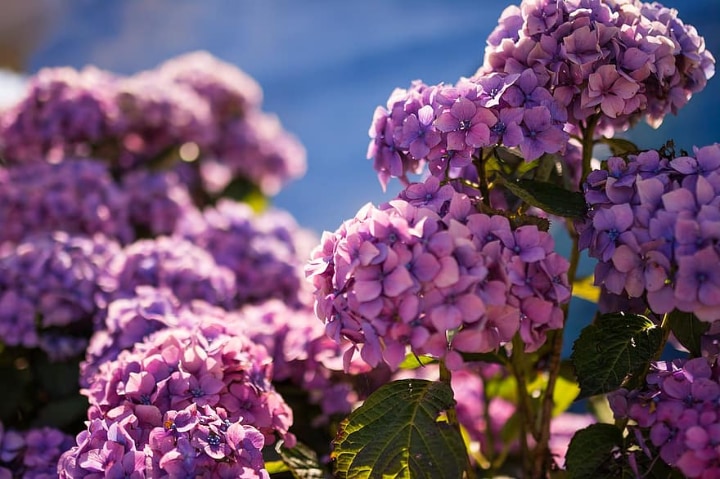
Full sun to partial shade is the ideal light condition for most types, with tree varieties tending to require more light. But if you live in a warm climate, provide them with some shade.
Temperature
Most varieties are not cold-hardy—a harsh winter can kill them. One exception are tree types, which handle colder temperatures better.
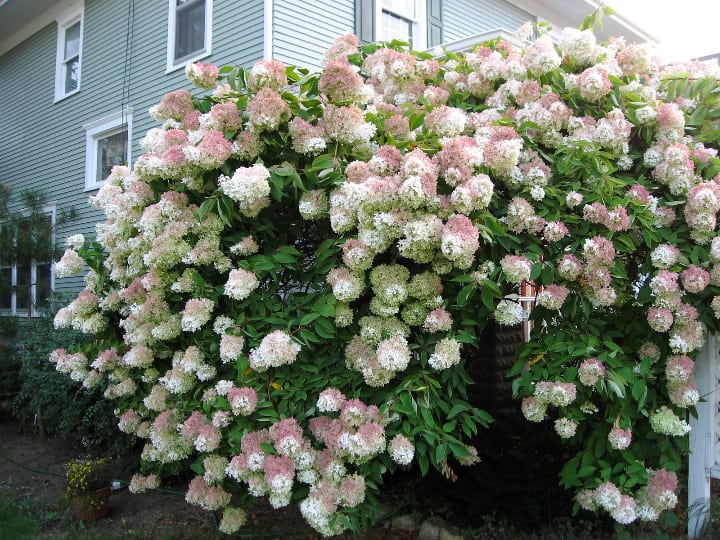
Before planting, make sure that you choose a variety or cultivar that’s been adapted to your region.
If you buy seeds online, check carefully the temperatures they can tolerate.
Watering
As already noted, these plants like moist but not wet soil. Left without water, they can easily wilt.
Extra care should go into watering them regularly during hot, dry summers.
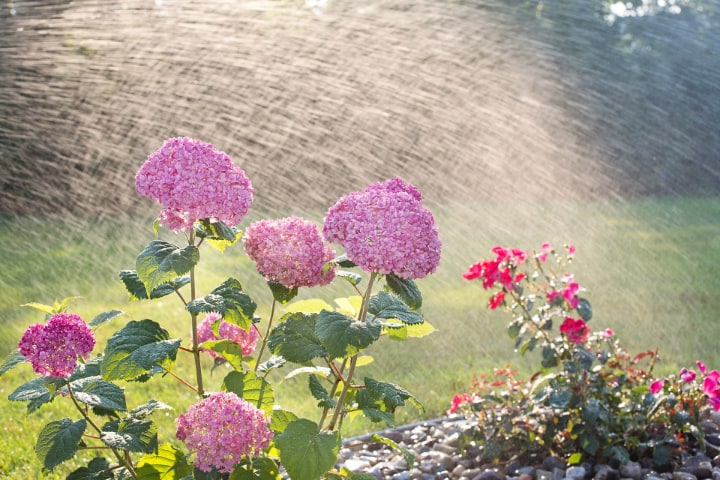
It’s important to water your hydrangeas at the base of the plant rather than overhead as this simple practice can prevent many fungal diseases.
Fertilizer
During the summer, use compost to fertilize your plant. This can make a big difference to the health and vigor of the plant.
Other than that, use a balanced fertilizer twice a year, early in spring and after the last blooms fade.
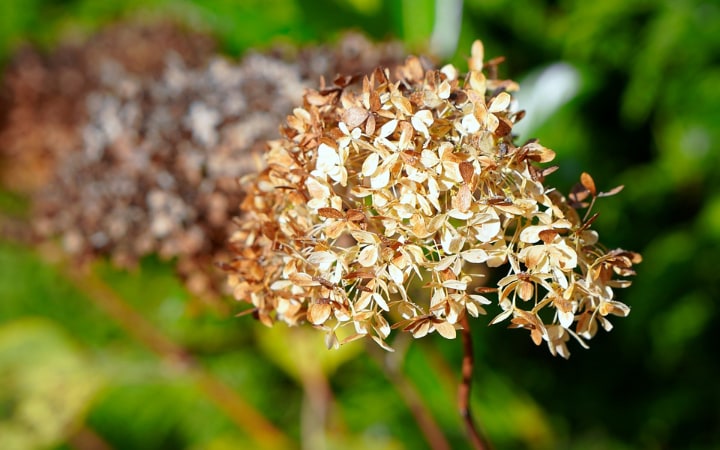
Good to know: Some cultivars can be more demanding in terms of fertilization than others.
Diseases
We’ve talked about the importance of watering the flowers at the base. These flowers are not particularly vulnerable to pests or other diseases.
But if the leaves or petals become diseased despite your precaution, you have to remove the affected part of the plant.
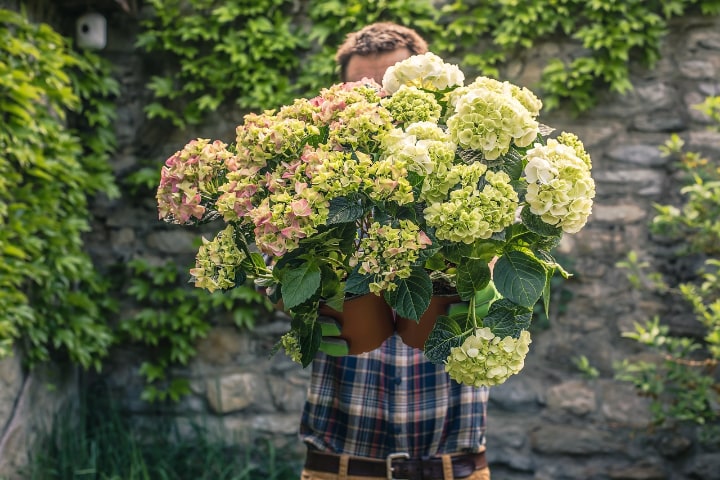
If the entire plant is affected, it’s best to remove it and plant another one. Ultimately, the best defense against hydrangea diseases is to choose cultivars resistant to the viral and bacterial diseases that commonly affect plants in your region.
Pruning
Hydrangea pruning is important for your plant to look its best. If you want to shape your plant into a tree, stake the main stem and remove shoots that emerge from it as well as competing ground stems.
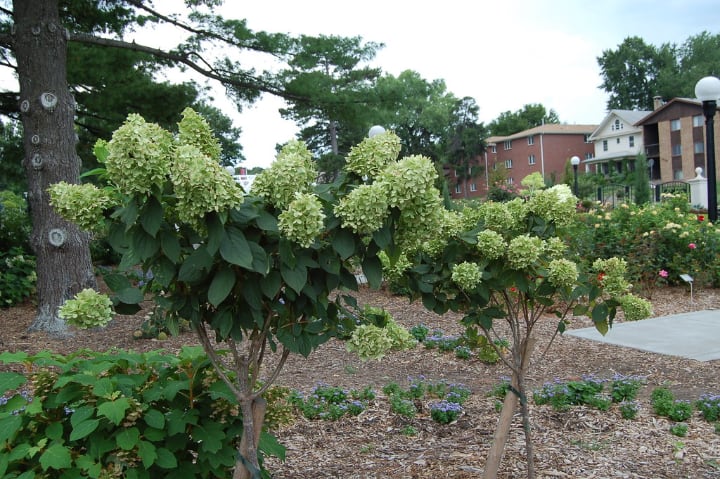
These plants grow fast but even so, you don’t want to cut away too much of them too fast. Shrub varieties can also benefit from pruning.
Prune your shrubs before the first growth of spring appears to increase the number of blooms. You can prune a shrub down to five main shoots.
If you miss on pruning your plant in the spring, don’t worry—you can also prune it in the fall, after the plant has flowered.
Hydrangea Frequently Asked Questions
Got some questions about this plant? Check out the questions below that people often ask about this interesting flower.
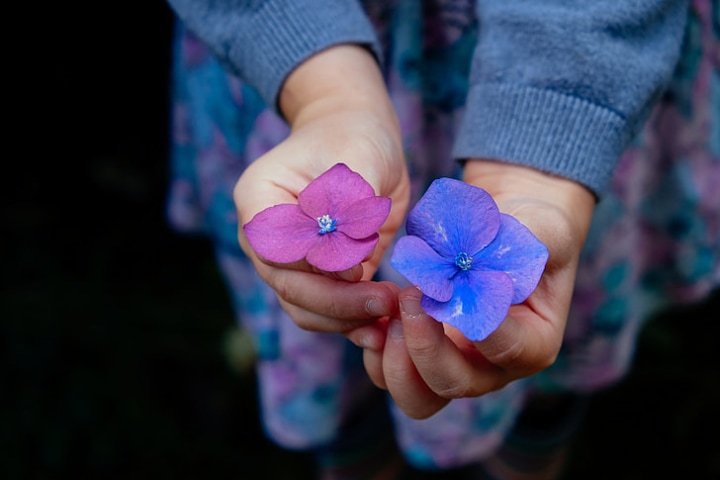
Do Hydrangeas Like Sun or Shade?
The ideal place to plant hydrangeas is where they get full sun in the morning and some shade in the afternoon. But you can also grow them in partial shade. Make sure to avoid full shade as that will eventually kill your plants.
How Do I Maintain Hydrangeas?
Hydrangeas are not hard to maintain—water them once a week when they’re growing and add mulch to the soil to preserve moisture. When choosing a fertilizer, check out the specific instructions for the variety you have.
Do Hydrangeas Come Back Every Year?
Your hydrangea will come back every year if it’s a winter-hardy variety. Otherwise, it may die during the winter and not return. Choose a hardy cultivar to enjoy it every year.
How Long Does It Take for Hydrangeas to Grow?
Hydrangeas grow fast compared to most other flowers. You can expect most to grow at least 25 inches every year until the plant reaches maturity. Over their lifetime, tree varieties can grow beyond 13 ft in height.
Grow Your Own Hydrangeas
Hydrangeas are beautiful and fun to grow. There are many varieties to choose from, including bushes, trees, and climbers. You can even change their colors.
And since most varieties grow fast, you don’t have to tap your feet impatiently while these flowers put on beautiful colors.
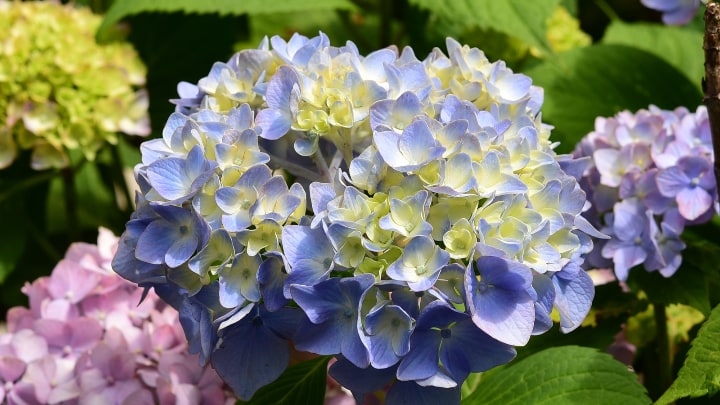
For all these reasons, hydrangeas should be on your list of flowers to grow—no excuses!
Choose the right variety for your region and follow our tips. You won’t have any problems growing your own hydrangeas!
PS: Got any hydrangeas in your garden? Drop us a comment and tells us all about them. We’d love to hear from you!

Leave a Reply